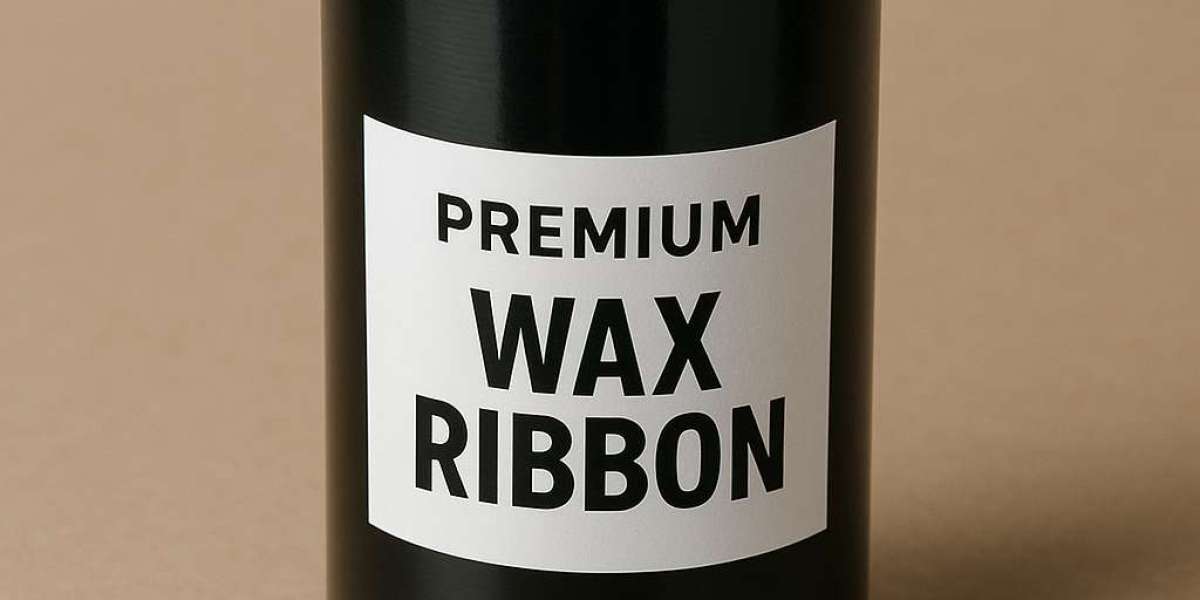Wax ribbon is a critical component in the world of thermal transfer printing, widely used across industries for producing high-quality barcode labels, tags, and packaging materials. Known for its affordability, compatibility, and ease of use, wax ribbon stands out as a popular choice for businesses seeking efficient and cost-effective printing solutions. In this comprehensive guide, we will explore what wax ribbon are, how they work, their types, benefits, applications, and how to choose the right ribbon for your needs.
What is a Wax Ribbon?
A wax ribbon is a type of thermal transfer ribbon made primarily from wax-based ink. It is used in thermal transfer printers, which apply heat to the ribbon, melting the ink onto the surface of a label or tag. Wax ribbons are typically paired with paper-based labels, making them ideal for general-purpose labeling.
Wax ribbons are composed of three main layers:
Backcoating – Protects the printer’s printhead from wear and friction.
Polyester film (carrier) – The base layer that carries the wax coating.
Ink layer (wax-based) – The actual wax-based ink that gets transferred onto the substrate when heated.
How Does a Wax Ribbon Work?
In thermal transfer printing, the wax ribbon is sandwiched between the printer’s thermal printhead and the label material. When the printhead heats up, it melts the wax ink on the ribbon. The molten wax then transfers to the label surface, where it quickly solidifies and adheres to form printed text, barcodes, or images.
This process produces sharp, smudge-resistant prints that are more durable than those produced by direct thermal printing.
Types of Wax Ribbons
Wax ribbons come in several variations, each suited to different printing needs:
1. Standard Wax Ribbon
Designed for general-purpose applications.
Works well with uncoated or matte-coated paper labels.
Economical and widely used.
2. Premium Wax Ribbon
Contains a higher percentage of resin than standard wax.
Offers greater durability and scratch resistance.
Suitable for semi-gloss and other slightly coated paper labels.
3. Wax/Resin Hybrid Ribbon
A blend of wax and resin for improved durability.
Compatible with synthetic materials like polypropylene and polyethylene.
Resistant to smudging, chemicals, and moisture.
Benefits of Wax Ribbons
Cost-Effective – Wax ribbons are among the most affordable thermal transfer ribbons, making them ideal for large-scale printing.
Versatile – Compatible with a wide range of paper labels and tag materials.
Good Print Quality – Produces clear and crisp prints, suitable for barcodes and product information.
Fast Printing – Works well with high-speed printers, enhancing productivity.
Reduced Printhead Wear – Soft wax formulation reduces abrasion on the printhead, extending its life.
Common Applications of Wax Ribbon
Wax ribbons are used in various industries for short to medium-term labeling tasks:
Retail – Price tags, shelf labels, and inventory tracking.
Logistics & Shipping – Shipping labels, address labels, and warehouse inventory.
Healthcare – Patient wristbands, specimen labeling, and asset tracking.
Manufacturing – Product identification, quality control labeling.
Education & Libraries – Book tags, ID labels, and organizational systems.
Choosing the Right Wax Ribbon
To select the best wax ribbon for your application, consider the following factors:
Label Material Compatibility – Ensure the ribbon matches your label surface (uncoated paper vs. coated or synthetic).
Printer Type – Check compatibility with flat-head or near-edge thermal printers.
Environmental Conditions – For humid or abrasive environments, opt for wax/resin ribbons for added durability.
Print Durability Requirements – For more resistant prints (scratch, smudge, or chemical resistance), consider a higher-grade ribbon.
Proper Storage and Handling
To maintain the quality of wax ribbons:
Store in a cool, dry environment (preferably 5°C–35°C).
Keep ribbons away from direct sunlight and dust.
Use ribbons within 12 months for best performance.
Conclusion
Wax ribbons are a reliable and economical solution for thermal transfer printing across a range of applications. Whether you're labeling retail products or managing logistics, choosing the right type of wax ribbon ensures optimal performance and print quality. With the right ribbon and printer combination, businesses can achieve fast, accurate, and long-lasting label printing without compromising on cost or efficiency.







